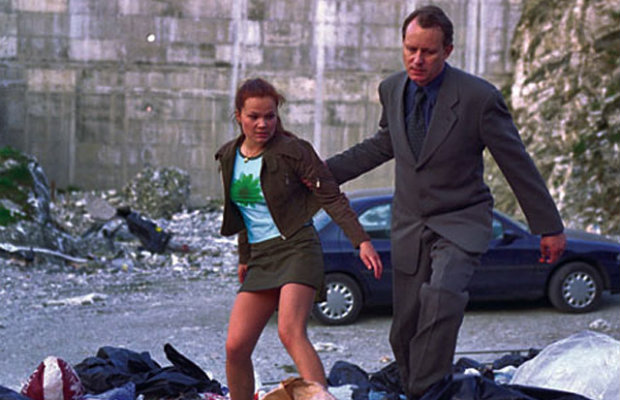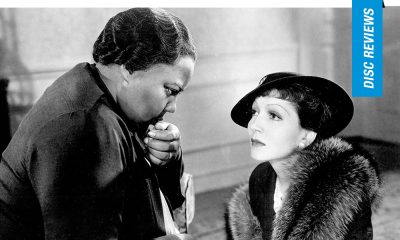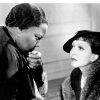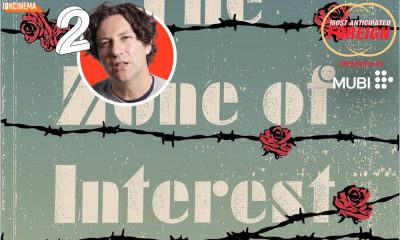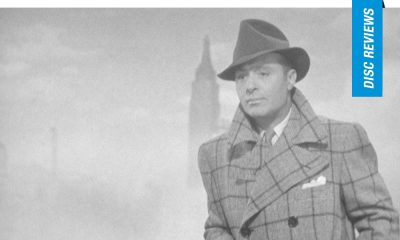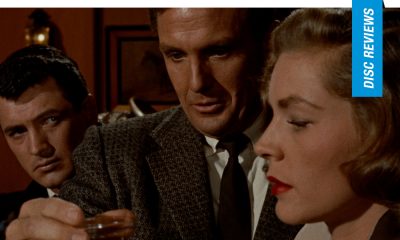Disc Reviews
Criterion Collection: Insomnia | Blu-ray Review
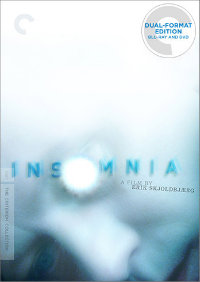 Erik Skjoldbjaerg’s 1997 directorial debut, Insomnia is a prescient prototype of what would now be termed Nordic Noir in today’s global film market. At the time of its release, it was one of the first Norwegian films of international note in quite some time, with Skjoldbjaerg joining the ranks of other notable newcomers like Pal Sleutane and Bent Hamer. An inverted film noir, utilizing light instead of shadow, there’s a cold blankness to the film, making it a sort of waking nightmare. When all is visible, there’s no place to hide, forcing the film’s protagonist into internalized retreat, escaping into himself. Too much light engages a similar sort of madness as the eternal shadows.
Erik Skjoldbjaerg’s 1997 directorial debut, Insomnia is a prescient prototype of what would now be termed Nordic Noir in today’s global film market. At the time of its release, it was one of the first Norwegian films of international note in quite some time, with Skjoldbjaerg joining the ranks of other notable newcomers like Pal Sleutane and Bent Hamer. An inverted film noir, utilizing light instead of shadow, there’s a cold blankness to the film, making it a sort of waking nightmare. When all is visible, there’s no place to hide, forcing the film’s protagonist into internalized retreat, escaping into himself. Too much light engages a similar sort of madness as the eternal shadows.
The murder of a teenage girl opens the film, shot on grainy super 8 while we witness the killer cleaning up the act. To investigate, a Swedish police officer stationed in Oslo, Jonas Engstrom (Stellan Skarsgard), travels to the small town in Northern Norway with partner Erik Vic (Sverre Anker Ousdal). During the autopsy, we overhear chatter concerning Engstrom, exiled to Oslo after an inappropriate dalliance with a female witness in a previous case. This doesn’t seem to frighten one of the local officers, Hilde Hagen (Gisken Armand), who seems a bit flirtatious with Engstrom, though he seems more taken with the blonde desk clerk at his hotel, Ane (Maria Bonnevie). As the investigation unfolds, Engstrom develops an acute case of insomnia due to the 24 hour daylight cycle of the Norwegian summer. Upon the discovery of the murdered woman’s knapsack, Engstrom and his team devise a trap for the killer who just so happens to take the bait. But the operation is botched, leading to Engstrom accidentally killing Vic. Rather than fess up to his error he blames the shooting on the killer, who manages to escape. While Hagen investigates Vic’s death, Engstrom continues his hunt while simultaneously going to great lengths to cover up his own crime.
Initially, we’re led to suspect Vic’s state of mind, a conversation about a red vs. green traffic light upon their arrival in the land of the midnight sun confirming his self-professed instability. We leave any semblance or mention of color behind here, trapped in a thick white fog of narrative from here on out, Skarsgard’s sallow, blank visage hiding his developing madness, surfacing briefly from out of his glazed baby blues as time wears on.
Cold, blond, isolated whiteness comprises the people and the landscape of constant sunshine and, almost imperceptibly, the narrative thrust veers off surreptitiously from pulpy thriller to glacial character study. The young woman’s murderer, a popular crime novelist, is revealed early on since Engstrom is forced into being his accomplice to save his own skin, and thus the two individuals become like doppelgangers, both men in a line of work where grisliness is all part of the constant milieu, now facing consequences after crossing a hallowed line.
It’s the visual scheme of Insomnia that supersedes its pulpy, knotty noir roots, for its narrative is rather slight. But Skoldbjaerg’s power is in the indefinite distortion, filmed in such a way that we’re never quite sure if what we’re seeing is a dream from Engstrom’s fevered mind or an actual event, such as when he maybe molests one of the victim’s high school classmates. It’s this uncertainty that really makes the film intriguing and a quite a bit more elegant than the famed Millennium Trilogy of Stieg Larsson’s, and a host of other Scandinavian crime thriller adaptations that have seen the rise of directors like Morton Tyldum and even allured Lasse Hallstrom back to his native Sweden for a crack at the genre.
And it’s what makes this original version much more interesting than Christopher Nolan’s 2002 (Insomnia) Alaskan set remake, which loses these troubling indefinites amidst the hardboiled certainties of a cast featuring Robin Williams, Al Pacino, and Hilary Swank. For instance, early on in the film, Engstrom chases after a bus, the perpetrator pressed against the back window. A car hits Engstrom, its windshield shattered, and the frazzled detective demands they pursue the bus. Next, we get a shot of Engstrom observing his reflection in the rearview mirror. His actions have shattered any clarity pertaining to his future (or the act of looking forward), represented beautifully by the shattered windshield. Instead, he’s forced to look behind, in the rear view, and figure out how to piece things together. Hindsight is always 20/20.
An almost unreadable Skarsgard gives a supremely calculated performance here, and it’s amazing to realize this was filmed around the same time as Breaking the Waves and Good Will Hunting. Looking back, Skjoldbjaerg’s career seems to have been denied its potential after a debut of such critical acclaim. He went on to adapt Elizabeth Wurtzel’s memoir, Prozac Nation (2001) as an English language debut. Though it starred Christina Ricci and Jessica Lange, it had trouble reaching theatrical release. Since then, he’s returned to Norway and made several other titles, with 2013’s Pioneer receiving notable applause (though it still has yet to snag US distribution).
Disc Review
Criterion’s 4k digital restoration of this title, originally ascending to the collection way back in 1999, creates an unparalleled home viewing experience for Erik Skoldbjaerg’s debut. The film’s success lies completely in its visual artifice and subtly off-putting performances. The all-encompassing whiteness of Erling Thurmann-Andersen’s cinematography is a poetic nightmare of sterile compositions, his oblique interiors as cold as the expansive landscapes.
Skarsgard and Skoldbjaerg:
The actor and director reunite for a recent conversation looking back on their experiences filming Insomnia. Skarsgard admits he didn’t initially care for the script and their talk reveals how the actor’s rich collaboration with the director helped shape the look of the film. Skjoldbjaerg mentions his influences for writing the film as the cinema of Jean-Pierre Melville, Coppola’s The Conversation, and Roeg’s Bad Timing, while Skarsgard admits he modeled his performance after that of Jean-Louis Trintignant in Bertolucci’s The Conformist.
Near Winter (1993):
Skjoldbjaerg’s first short concerns a grandson visiting his grandfather’s isolated farmer with his English speaking girlfriend in tow. Learning his grandfather is growing blind, the young man struggles to decide how best to help the old man. Skjoldbjaerg displays an early knack for landscape as character with this early work.
Close to Home (1994):
A man saves a young woman from being brutalized in an alley. She’s inebriated and potentially a minor, though she claims to be 17. Leaving her behind in a parking lot, the police show up at his home the next morning to ask about the young woman who had been raped that night. While we assume his innocence, the man’s erratic behavior soon starts forcing us to have doubts. Here we see Skoldbjaerg experimenting with the conventions of genre melded with narrative led by visual cue. It’s an intriguing short as well as an unsurprising stepping stone into Insomnia.
Final Thoughts:
A preexisting cinematic text of the brand that’s come to be called Nordic Noir, Insomnia is ripe for rediscovery in a flooded market of pulpy Scandinavian crime sagas that don’t come close to the same level of visual artistry as Skjoldbjaerg’s original title, a tale that even Christopher Nolan couldn’t one-up.
Film: ★★★½/☆☆☆☆☆
Disc: ★★★★/☆☆☆☆☆
Los Angeles based Nicholas Bell is IONCINEMA.com's Chief Film Critic and covers film festivals such as Sundance, Berlin, Cannes and TIFF. He is part of the critic groups on Rotten Tomatoes, The Los Angeles Film Critics Association (LAFCA), the Online Film Critics Society (OFCS) and GALECA. His top 3 for 2021: France (Bruno Dumont), Passing (Rebecca Hall) and Nightmare Alley (Guillermo Del Toro). He was a jury member at the 2019 Cleveland International Film Festival.



